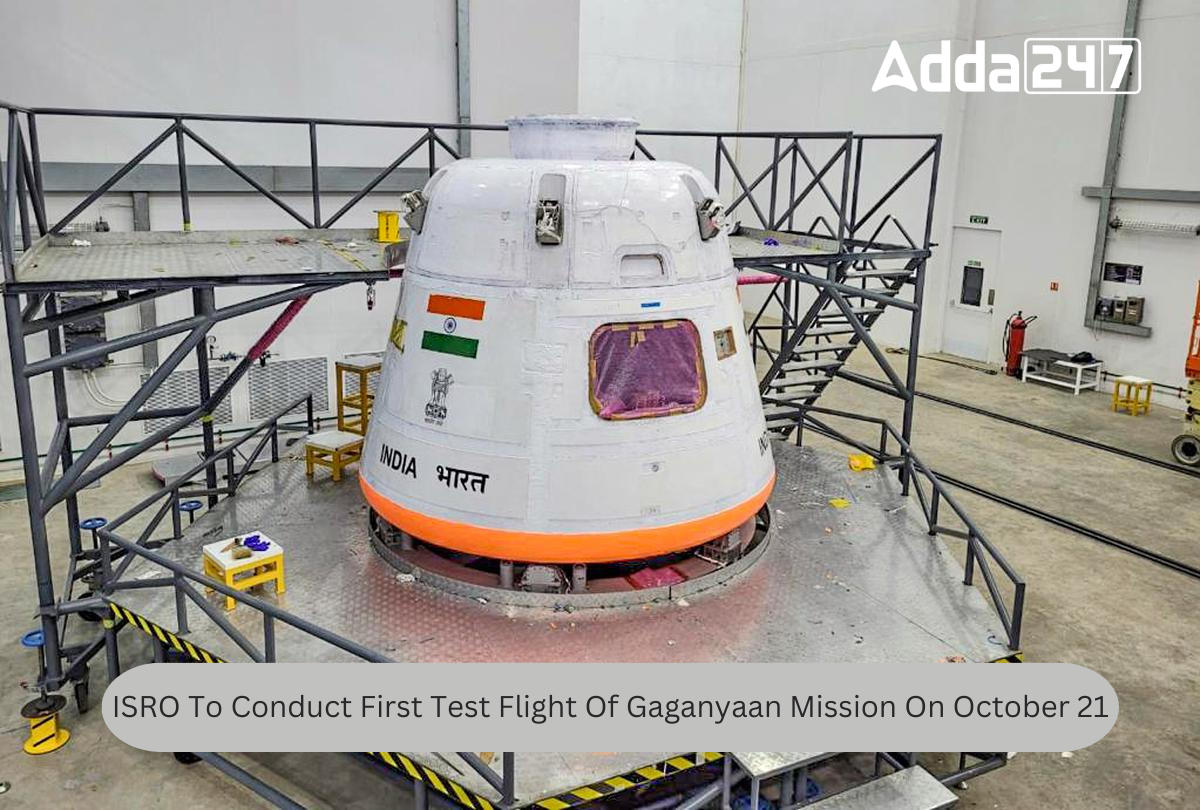Jitendra Singh, Minister of State for Space, Science, and Technology, officially announced that, on October 21, The Indian Space Research Organisation (ISRO) is poised to make history as it prepares to conduct the first in a series of critical test flights in anticipation of the much-anticipated Gaganyaan mission, which marks India’s maiden charge into manned space exploration.
Testing the Crew Module: A Pivotal Step
The forthcoming test flight will be executed at the Satish Dhawan Space Centre in Sriharikota, a renowned launch facility. The primary objective of this mission is to evaluate the “crew module,” the pivotal component that will house Indian astronauts during their journey into space. The crew module’s success is paramount, as it directly impacts the safety and well-being of the astronauts who will soon embark on this historic journey.
Mission Overview: A Bold Journey to the Cosmos
The test mission entails launching the crew module into outer space and orchestrating its return to Earth, with a successful touchdown in the Bay of Bengal. To ensure a seamless and safe recovery process, the Indian Navy has initiated mock operations to prepare for this momentous occasion. The recovery process is a crucial aspect of the mission, ensuring the astronauts’ safe return to Earth’s surface.
Crew Escape System: A Lifeline in Space
Accompanying the crew module is the ‘crew escape system,’ a failsafe mechanism designed to protect astronauts in the event of complications during the spacecraft’s ascent into space. This system’s function is to rapidly separate from the spacecraft and guide the crew to safety back on Earth, where they will be picked up by dedicated Navy personnel. The crew escape system’s successful operation is paramount to the overall safety of the mission.
Test Vehicle Abort Mission (TV-D1): A Crucial Step
The first test in the series, known as Test Vehicle Abort Mission (TV-D1), replicates the actual mission’s conditions but with an ‘unpressurized’ crew module. This scenario tests the system’s performance without exposing the astronauts to unnecessary risk.
The test vehicle is a single-stage liquid-fueled rocket designed explicitly for this abort mission, carrying payloads that include the Crew Module (CM) and Crew Escape Systems (CES).
During the launch, the CES will separate from the CM at an altitude of about 17 kilometers. The sequence will then autonomously execute the necessary steps, culminating in a safe landing of the CM in the sea, approximately 10 kilometers off the coast of Sriharikota.
Setting the Stage for Mankind’s Giant Leap
The success of the TV-D1 test mission marks a pivotal stage in ISRO’s preparation for the Gaganyaan mission. This accomplishment will not only validate the technology and systems but also build the foundation for the upcoming unmanned and ultimately manned Gaganyaan missions. These missions hold immense promise for India’s role in space exploration.
A Promising Future: The Vyommitra Mission
Mr. Jitendra Singh, the Minister of State for Space, Science, and Technology, also announced that a test flight scheduled for next year will introduce “Vyommitra,” a female robot astronaut. This unique mission is another step forward in India’s pursuit of scientific and technological excellence, showcasing its commitment to inclusivity and diversity in space exploration.



 Indian Olympic Medal Winners List Till N...
Indian Olympic Medal Winners List Till N...
 Who is the Inventor of the Gramophone?
Who is the Inventor of the Gramophone?
 HS Dhaliwal Appointed New DGP Of Andaman...
HS Dhaliwal Appointed New DGP Of Andaman...
